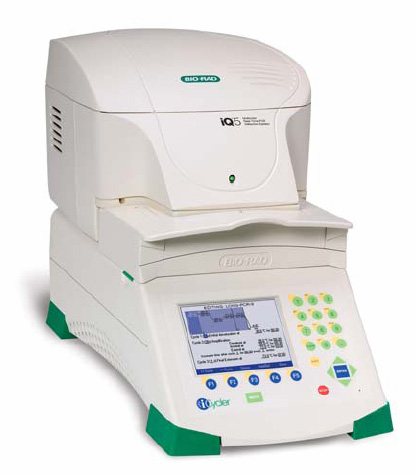qPCR-kurs
Real Time Quantitative PCR
(7 credits)
October 1st-29th, 2014
Seminar 5 (Reports), Alyona Minina, Department of Plant Biology, SLU
2014.10.24 9:00-12:00 Seminar 4 (Statistical analysis),Alyona/ Maartje Klapwijk
Homework 6 pdf or .pptx, Assignment, Minitab 17
Lecture 7 (Statistical analysis), Maartje Klapwijk, Department of Ecology, SLU
Seminar 3 (Normalisation), Alyona Minina,
Homework 4, Excel example of RT-qPCR design, guideline for design calculation
Seminar 2 (RT-qPCR), Alyona Minina, Department of Plant Biology, SLU
Lecture 6 (Normalisation), Department of Physiological Botany, UU
Lecture 5 (Microarray), Pauliina Munne, FuGU, Helsinki University
Lecture 4 (qPCR in forensics), Johannes Hedman, Lund University/SKL polisen
Lecture 3 (Next gen seq), Olga Vinnere Pettersson, NGI Uppsala
Homework 3: design primers for the experimental part of the course
Seminar 1 (qPCR), Alyona Minina, Department of Plant Biology, SLU
Lecture 2 (qPCR), Alyona Minina, Department of Plant Biology, SLU
Lecture 1 (PCR), Alyona Minina, Department of Plant Biology, SLU
Useful stuff
Manual for run setup and data analysis
How to find linear regression in Excel
Short guide for qPCR data analsysis
Selecting reference genes
GENEVESTIGATOR (make sure JAVA is of the latest version and is enabled in your internet browser)
Primer design
Softwares for data analylis (for Windows only, sorry)
CFX Manager, to install:
- download the file
- unzip CFX Manager 3.1.zip
- open the folder CFX_Manager
- run the Setup file
IQ5, to install:
- download the file
- unzip the IQ5.zip
- run the dotnetfx file
Your data:
CFX connect IQ5


CFX short manual IQ5 short manual
dilution factor for efficiency curves
sample A and sample B preparation:
plasmid concentration was measured with NanoDrop = 177ng/ml
- > diluted 17.7 times to the concentration 10 ng/ul
->concentration was confirmed with Nanodrop = 9.8 ng/ul
->this dilution was aliquoted as sample A for students
->an extra aliquote of sample A was diluted additionally 1:5, 1:10, 1:25, 1:60
->these dilutions were aliquoted as samples B and signed with students names
|
Sample B |
Sample B concentration ng/ul |
Student |
|
sample A 1:5 |
2 |
Tina |
|
sample A 1:5 |
2 |
Jule |
|
sample A 1:5 |
2 |
Anna |
|
sample A 1:5 |
2 |
Enrique |
|
sample A 1:10 |
1 |
Martin |
|
sample A 1:10 |
1 |
Zaenab |
|
sample A 1:10 |
1 |
Maite |
|
sample A 1:10 |
1 |
Anders |
|
sample A 1:25 |
0,4 |
Enid |
|
sample A 1:25 |
0,4 |
Mohammad |
|
sample A 1:60 |
0,17 |
Reza |
|
sample A 1:60 |
0,17 |
Jun |
|
sample A 1:60 |
0,17 |
Kiran |
|
sample A 1:60 |
0,17 |
Shirin |
Here you can find the syllabus and schedule
Real-time quantitative PCR is a very popular method broadly used and missused in molecular biology. The aim of this course is not only to teach the very basics of the qPCR theory and practice, but also to introduce students to the MIQE guidelines essential for designing performing and interpreting quantitative experiments in a reliable way.
Another aim of this course is to familiarize students with more adavanced techonologies alternative to qPCR which are gradually becoming more and more available. Students will have an opportunity to meet with experts from SciLifeLab and Functional Genomics Unit of Helsinki University and also learn how qPCR is applied in forensic science.
To register for the course send an e-mail to: alena.minina @ slu.se
Deadline for registration: September 19th 2014
All lectures are open, registration is required only to attend the practical part of the course
Lecturers
Alyona Minina, Department of Plant Biology, SLU
Olga Vinnere Pettersson, UU. NGI Uppsala.
Maartje Klapwijk, Department of Ecology, SLU
Johannes Hedman, Applied Microbiology, Lund University. SKL
Pauliina Munne, FuGU, Helsinki University
Participants (max. 16 students)
- Salim Hossain Reza, Department of Plant Biology, SLU
- Konstantia Gkarmiri, Department of Forest Mycology and Plant Pathology, SLU
- Enid Ming Zhao,Department of Plant Biology, SLU
- Martin Palmqvist, Department of Chemistry and Biotechnology, SLU
- Jun Yi, Department of Plant Biology, SLU
- Zaenab Al-Azzawi,Department of forest mycology and plant pathology, SLU
- Jule Brandenburg, Department of Chemistry and Biotechnology, SLU
- Kiran Kumar Jagarlamudi, Department of Anatomy, Physiology and Biochemistry, SLU
- Anna Carlson, Department of Plant Biology, SLU
- Enrique Del Olmo de Medina, Castilla-La mancha University/SLU
- Maite Urbano, Cordoba University/SLU
- Shirin Akhter, Department of Plant Biology, SLU
- Anders Johannisson, Department of Anatomy, Physiology and Biochemistry, SLU
- Mohammad Jaber Alipour, SLU
Länkar
Course Organizer:
Alyona Minina, E-mail: alena.minina @ slu.se
SLU Graduate School in Organism Biology
